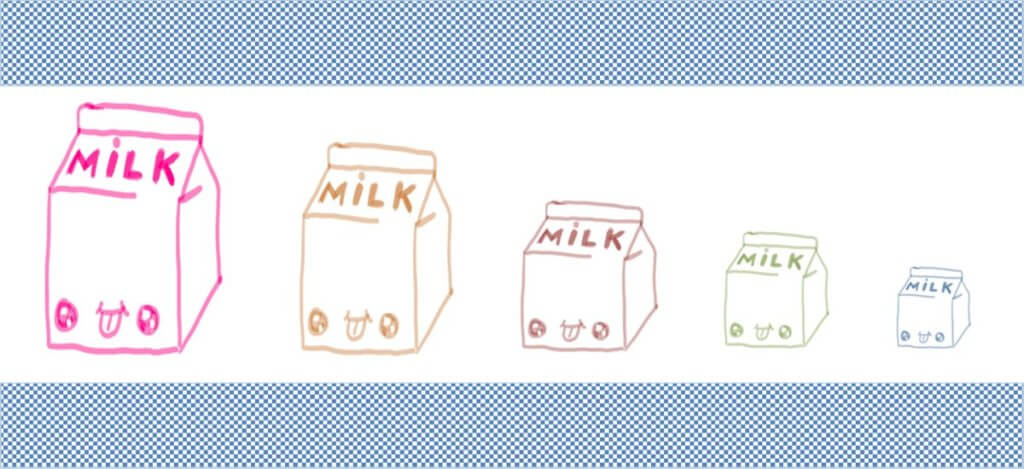1 . From Infrequent to Continuous Delivery
Experiencing 5x Transformation

By Maaret Pyhäjärvi
Recently, I have found myself thinking of milk a lot. Not the most usual thing to think of, given that my work revolves around quality, testing, developer productivity.
Looking back, I have been through five rounds of transforming teams from infrequent releases to continuous delivery, and a lot of my distilled wisdom comes down to milk.
The first story of milk I find myself telling, almost on repeat, is on the fact that test results are like milk – they go sour quite soon.
If you have test results from six months ago on a product succeeding in any way in the modern software organizations, change is a constant. Change takes us forward. It is a reaction of trying to create something of value. And in absence of change, we have learned to understand that the world around us changing means we are longer staying on board with what is needed.
We want to keep replenishing our test results, not only because we change our software, but because we are not able to stop the ecosystems we reside in from changing.
It is not just test results that are like milk though. It is also our practices. Every single agreement made earlier deserves a regular replenish. Instead of collecting rule after rule, we should retire some of our rules as we come up with new ones. This creates a good platform for experimentation.
Milk also comes around when thinking about how much of it we should stock. I remember an old experience where we stocked two with a roommate, and wanted to use older first, only to learn the plopping sound sour milk makes when you pour it into a coffee cup you hand to your neighbor visiting.
Having some of the same from a later batch gave us an opportunity to try again, and fix the problem we had just created for ourselves. Next batch can fix problems the previous batch reveals.
Finally, I keep explaining that software is not like milk – it is not more expensive in small cartons. Quite the opposite. Smaller units of delivery keep risk at bay, and risk is expensive.
In this article, it is not really milk that I want to talk about.
I want to share my experience of facilitating a transformation into smaller batches of delivery deliberately to turn my specialty work – testing – from stress in the end to continuous flow of collaboration. I find that it is always been a journey and while I can imagine a destination of continuous deployment where software flows many times a day into production, for that level I am still on the journey.
The 5x Transformation
With 25 years in the industry, I found two guiding principles useful in my choices of where I work:
- Great testing depends on context but how could I recognize that context in action – experiencing clearly different contexts.
- Making suggestions as a consultant is not my level of involvement – I want to suffer / enjoy through the changes as someone in the software development team that is changing.
I come to work on testing and I find myself changing how we deliver with quality, continuously. In hindsight, it is easy to see that it ended up being the same kind of change I guided five teams and myself through, and after multiple repeats, I also see how my approach has grown.
The five teams include three different product organizations, three significantly different delivery environments, and two different approaches to sufficient automation.

Living through this many times, I have come to see how that has changed my perspectives:
1. Frequent releases make sense
Smaller batches of delivery help us get to a place where we can flow through change in a way that changes the day-to-day conversations from planning too much to planning just right with a principle of always moving to better. People work better with smaller changes.
2. Automate a build pipeline you can rely on
The work starts from making sure that whatever changes in code will automatically become available in packages in environments where people can see them in system context. Expect more than build at a press of a button – expect build to start with every change.
3. Test automation is useful but not a necessary condition
The results of your testing will go sour with time anyway, and while test automation on multiple levels that indicates unwanted changes and calls people in to explore is useful, it is better regardless of automation level to work with smaller batches people can grasp.
4. Delivering continuously (*) is a feature of the product
(*) to large numbers of endpoints/users
While updating your web application on your own servers is where continuous delivery has its homeground, it is just as possible to make it work for a globally distributed set of personal computers or IoT devices. It has dependency on a reliable update feature, and the more continuous you seek, the more your feature design needs to include incremental updating to manage network use. Just your customers’ need for security patching often warrants these features.
5. Design to hide half-done work
For features that are incomplete, design how they are deployed continuously but released when ready. Some applications I have worked with achieved this by including the UI last, having the feature off by default without user ability to turn it on, and actively designing for managing the risk in small chunks. Others used feature flags, making it a challenge to remember to clear them up and not leave around as combinations to support.

6. Work cognitive dissonance to the benefit of the change
Changing behaviors we live through changes our beliefs. Cognitive dissonance refers to a situation where our attitudes, beliefs and behaviors are in conflict, and the feeling of mental discomfort changes attitudes and beliefs as you work through the behaviors. Involving people in doing continuous delivery changes them.
7. Follow the tempo metrics
The Accelerate book by Nicole Forsgren et al. suggests two metrics on tempo and two on stability. The tempo metrics are lead time and deployment frequency. The tempo metrics turned into a concrete way of seeing if we are making progress, and with the latest experience, moving from 32 working days through 11 working days to 3 working days in lead time provides a good reminder that the work is done improving release after release.
8. Leaving a team to continue is hard
With experience of moving on and leaving teams where this transformation has been our common journey, I find that not all of them stick to the same frequency we collectively could do. Moving fast means usually thinking fast for testing in a system context, and while test automation helps, it is just one part of the equation. I like to think that just like with the product always moving to better the teams through this experience are better than without the experience.
Release Frequency is a Game Changer
I started with milk, and I am ending with water. I have come to understand that while testing is still testing and programming is still programming, everything changes when we release more frequently.
A bathtub is a container of water. A pool is a container of water. Yet with these containers of water, we can easily imagine that the purposes a pool and bathtub serve are very different. We would find the ideas of a bath guard, bath party and bath slide at least a little funny, while they all are common purposes a pool enables.

I do not yet know where my journey with continuous delivery will take me, but just being on that journey has positive impacts, enabling us new purposes.
I am Maaret Pyhäjärvi and these are my agile-thoughts
2021 © Helsinki, FINLAND by Maaret Pyhäjärvi

Maaret Pyhäjärvi is an exploratory tester extraordinaire with a day-job at Vaisala as Principal Test Engineer.
She is an empirical technologist, a (polyglot) programmer, a catalyst for improvement, a community facilitator, a speaker and a three-book author: “Ensemble Programming Guidebook,” “Exploratory Testing” and “Strong-Style Pair Programming.”
She has been awarded two prestigious global testing awards: the Most Influential Agile Testing Professional Person 2016 (MIATPP) and the EuroSTAR Testing Excellence Award (2020). Also, she was selected as Top-100 Most Influential in ICT in Finland 2019 & 2020.
USEFUL? You can share it!
